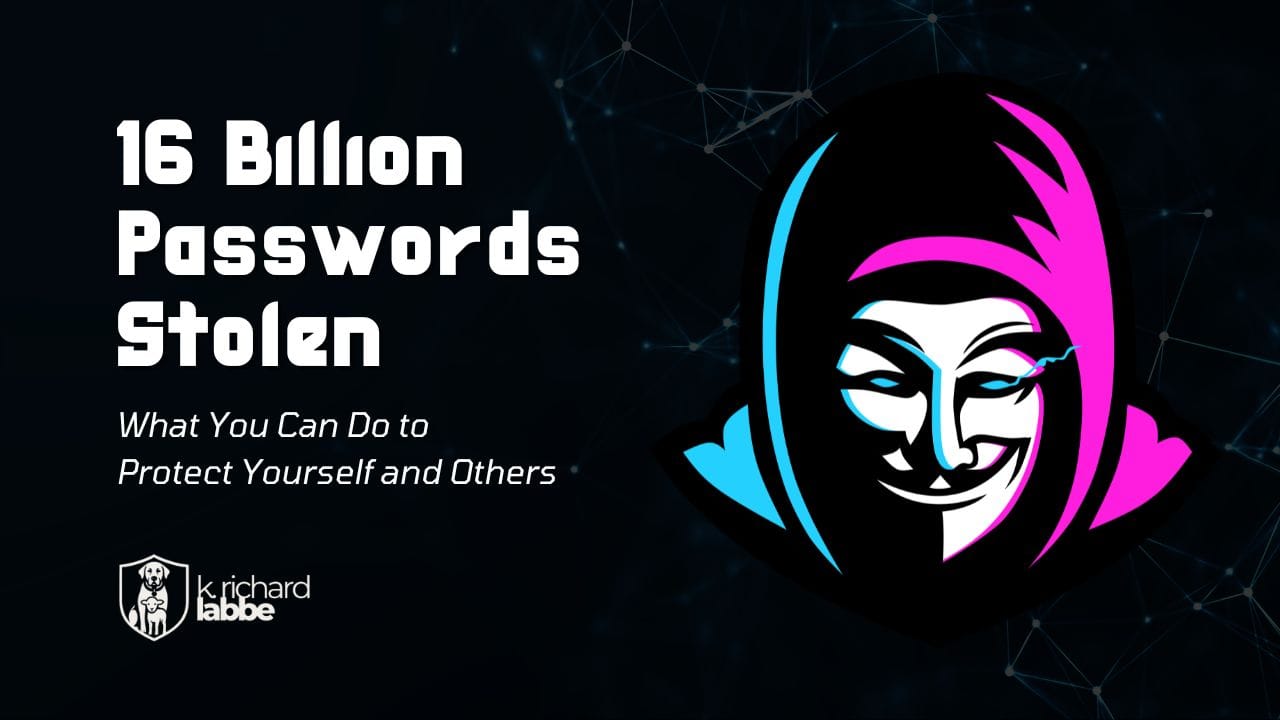16 Billion Passwords Leaked: What You Need to Know and Do Next
You don’t need a cybersecurity degree to feel the weight of this: Sixteen billion usernames and passwords—many from platforms we all use daily—have just been discovered circulating among cybercriminals. Apple. Google. Facebook. Even government portals. Here's what you can do.

You don’t need a cybersecurity degree to feel the weight of this: Sixteen billion usernames and passwords—many from platforms we all use daily—have just been discovered circulating among cybercriminals. Apple. Google. Facebook. Even government portals.
No, this wasn’t a single mega-hack.
Instead, it’s the result of malware silently stealing login details from personal devices—one by one, click by click—until hackers built a database large enough to make headlines around the world.
And here we are.
If you’ve ever saved a password in your browser, reused a login across platforms, or helped someone else manage their digital life, this moment matters. The leak is real. The threat is current. And the steps you take in the next 24 hours could make all the difference.
How This Happened
This wasn’t a breach of Apple’s servers or Facebook’s systems. It was something quieter and more invasive.
Hackers used what’s called infostealer malware—tiny, malicious programs that slip into your computer through a sketchy download, a compromised ad, or a phishing link. Once installed, these programs lurk in the background, collecting usernames, passwords, cookies, browser data, and more.
You might never know it was there.
That’s what makes this leak so dangerous. The credentials are fresh. Many are still valid. And because they were taken directly from individual users, the usual protections—like company firewalls or password resets—aren’t enough to stop the fallout.
Why This Matters
A single compromised password can open doors you never meant to unlock. Your email connects to your bank. Your cloud storage holds your tax returns. Your Facebook account is linked to your business page.
Because in a world where stolen credentials are bought, sold, and reused within minutes, even a small vulnerability can have a big ripple effect.
What You Can Do—Starting Today
Let’s be clear: you don’t have to fix everything all at once. But you should start with what matters most.
Begin with your email account. If someone controls your inbox, they can reset the passwords to nearly everything else. Use a new, strong password—not something recycled. If your current email provider offers multi-factor authentication (and it probably does), turn it on.
Next, think about your bank and any other financial logins. Change those passwords too. And if you’re using the same password across more than one site, make it a goal to stop. It may take time, but it’s worth it.
This is also a good moment to adopt a password manager. I personally like NordPass (affiliate link), and even Apple’s built-in tools can generate and store strong, unique passwords for every account. The fewer you have to remember, the safer you’ll be.
Finally, check your email address at HaveIBeenPwned.com. It’s a free, trustworthy site that can show if your credentials have been part of any known data leaks. If you’re helping a parent, spouse, or coworker, consider checking theirs too.
For Households, Ministries, and Teams
If you help manage accounts for others—or if your church, business, or nonprofit relies on shared logins—now’s the time for a short review. Even five minutes looking through your list of saved passwords could reveal some weak spots.
Update what you can. Flag anything suspicious. And encourage the people around you to do the same.
These aren’t just “tech issues.” They’re stewardship issues. They affect trust, finances, and peace of mind.
No Shame. Just Wisdom.
If you feel behind on password security, you’re not alone. Most people do.
This isn’t about catching up with the tech experts or building a perfect digital life. It’s about taking one wise, faithful step at a time to protect what matters—and to care well for those around you.
So if you’ve been putting off a password change, today’s a good day to start.
If you’ve meant to turn on two-factor authentication but haven’t gotten around to it, set a reminder.
And if you’re already doing these things, take a moment to encourage someone else who isn’t sure where to begin.
We don’t have to do it all today. But we do need to do something.
Remember: prepared, not paranoid.
Stay safe. Be ready. Online and off.
Every effort has been made to ensure the accuracy and reliability of the information presented in this material. However, Labbe Media, LLC does not assume liability for any errors, omissions, or discrepancies. The content is provided for informational and educational purposes only and should not be considered professional advice. Viewers are encouraged to verify any information before making decisions or taking actions based on it.
